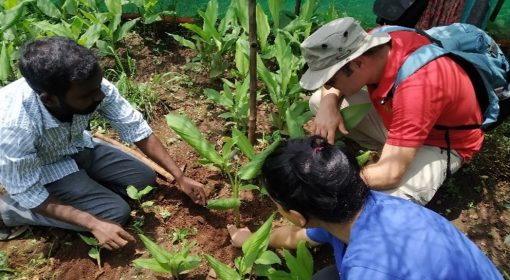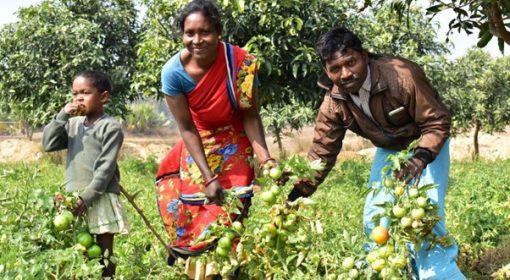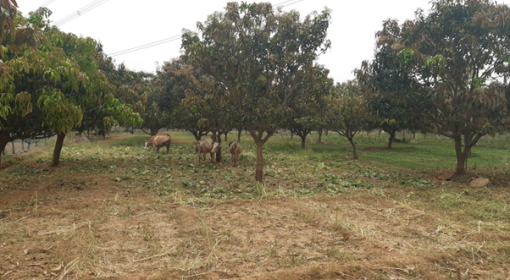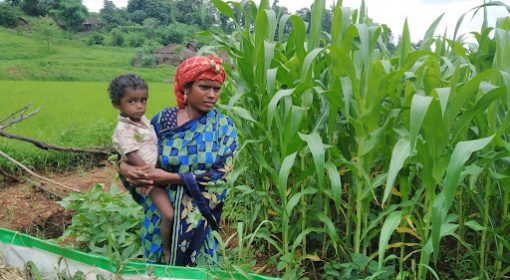by Marina Vara Gutiérrez (Aidenvironment) and Rubén Borges Robles (Rockinsoils)
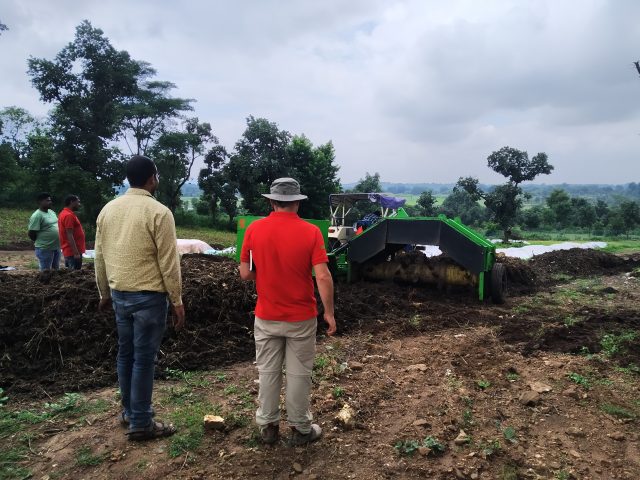
India has been facing a problem of soil fertility for decades. The Green Revolution was one of the first attempts to solve this problem, but it had many shortcomings that have only become more apparent as time went on. The Green Revolution was based on heavy use of chemicals and an increase in crops grown per acre, which caused farmers to lose their traditional knowledge about how to maintain soil fertility without relying on chemicals. Farmers in the states of Madhya Pradesh and Jharkhand, after realizing the negative effect of chemical use in soil, animal and human health, are looking into new ways to improve the soil quality and make them fertile again.
In recent years, there has been a number of Indian farmers adopting regenerative agricultural practices as a way to counter part of the negative effect of decades of agricultural chemical input uses. The goal of regenerative agriculture is to restore soil health and fertility by introducing a set of integrated farming practices. One of these practices is the application of organic compost to the farm plot. Compost is a soil amendment made out of decomposed organic matter that improves the aeration and moisture retention capacity of the soil while enriching it with essential nutrients that enhance the soil microbial activity. Thus, allowing essential plant growth nutrients to be available for plant uptake in the soil. As part of the Green Transformation Pathways (GTP) project, the concept of Large-Scale Composting Units has been introduced in the states of Madhya Pradesh and Jharkhand where access to information about regenerative agricultural practices and access or the production of organic compost is limited or nonexistent.
When designing a Large-Scale Composting unit the characteristics of the selected plot will influence the quality of the compost produced and the efficiency of the logistical production process. Factors like slope, sun and wind exposure, space between the windows, designated testing areas need to be considered to make the Large-Scale Composting unit more efficient and reduce production costs. In terms of production, the compost formulation needs to be adapted to the seasonal availability of materials and changing weather (dry or rainy season) of the production location. Moreover, the Compost Unit staff should be able to visually monitor the composting process and the quality of the final product. Additionally, the machinery used in the compost production needs to be adequate in terms of size and production volume and need to be maintained and fine tuned (if needed) to facilitate constant and consistent compost production. Finally, it is crucial to develop a business and marketing plan for each Large-Scale Composting Unit and consider how the product will be distributed and introduced into the local market.
The production of quality compost at an affordable price in Large-Scale Composting Units in the states of Madhya Pradesh and Jharkhand will improve soil fertility and increase food production. During the next months of the GTP project, together with PRADAN, FES and MetaMeta, we will develop a set of interventions to improve compost production in existing Large Scale composting units and to set up new ones in other project areas.
Produced by:

